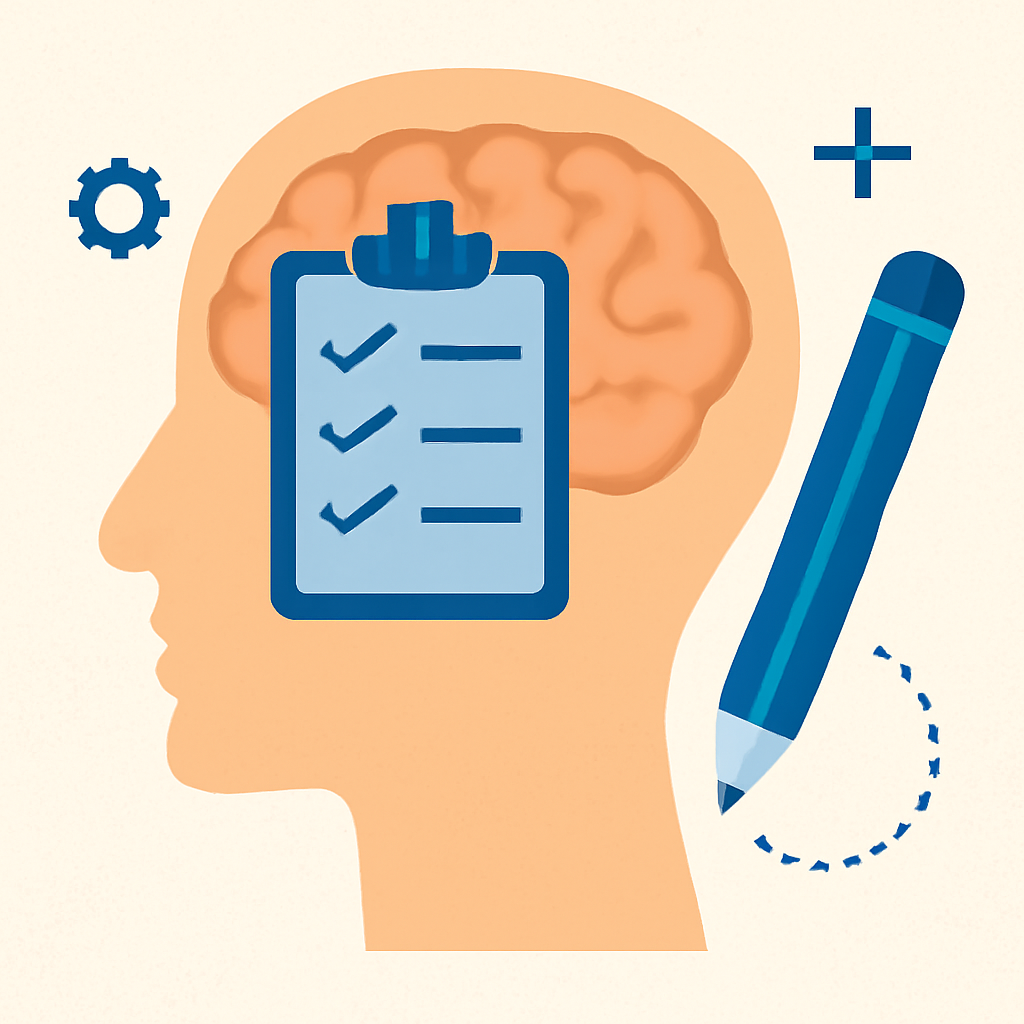In today’s world, where distractions are constant, maintaining mental precision is critical for success. The ability to think clearly, stay focused, and make informed decisions is a skill that can be honed through internal editing. Just as an editor refines written content, internal editing allows us to refine our thoughts before acting on them, leading to clearer and more effective decision-making.
By practicing internal editing, we enhance our mental precision, which helps us solve complex problems, communicate ideas clearly, and make better decisions. This skill is essential in education, where students must process and retain information effectively. It’s also valuable in society, enabling individuals to engage thoughtfully in discussions and make informed choices.
In this article, we’ll explore how internal editing builds mental precision, its impact on cognitive function in education and society, and how you can develop this valuable skill.

What Is Internal Editing?
Internal editing is the process of evaluating, refining, and adjusting our thoughts before expressing them. It’s similar to editing a written draft—cutting unnecessary parts, rewording for clarity, and ensuring the message is coherent. Instead of working with written words, we use internal editing to monitor and refine our thoughts.
Key Components of Internal Editing
-
Filtering Out Distractions: We have numerous thoughts at any given moment, many of which aren’t relevant. Internal editing helps us focus on the most constructive ideas.
-
Clarifying Ideas: Internal editing makes our thoughts clearer and more concise, especially important when dealing with complex ideas.
-
Evaluating Options: Before making decisions, internal editing helps us weigh pros and cons, consider outcomes, and plan strategically.
In essence, internal editing ensures our thoughts and decisions are coherent, strategic, and aligned with our objectives, making it essential for effective thinking and communication.
Why Internal Editing Builds Mental Precision
1. Enhances Focus and Reduces Cognitive Load
The ability to focus on a single task without being overwhelmed by irrelevant information is a crucial skill today. Internal editing helps manage cognitive load by filtering out distractions, allowing individuals to focus on the task at hand. This leads to a more precise thought process, reducing mental clutter and boosting decision-making and learning.
Research shows that filtering out distractions helps our brains work more efficiently, improving memory retention and problem-solving abilities (Sweller, 2011). By engaging in internal editing, individuals can increase their ability to concentrate—particularly valuable in educational settings.
2. Improves Problem-Solving Abilities
Internal editing enables individuals to evaluate their ideas more critically. Rather than rushing into solutions or jumping to conclusions, internal editing involves filtering, clarifying, and refining thoughts. This deeper reflection leads to more effective problem-solving.
In academic writing or research, internal editing helps students refine their arguments, ensuring they are based on logical reasoning and sound evidence.
3. Promotes Critical Thinking and Decision-Making
Internal editing is crucial for developing critical thinking skills. By editing thoughts internally, we challenge assumptions, consider alternative perspectives, and question biases. This level of reflection helps individuals make well-reasoned conclusions rather than acting impulsively.
In public discourse, those who practice internal editing engage in more thoughtful, constructive conversations. This improves decision-making and contributes to informed, reasoned discussions on societal issues.
4. Supports Effective Communication
Internal editing enhances communication by refining our thoughts before we express them. Whether in writing, presentations, or conversation, internal editing helps us articulate ideas more clearly. In educational settings, students who practice internal editing communicate more effectively, contributing to better performance in essays, class discussions, and presentations.
5. Encourages Reflection and Self-Regulation
Internal editing is also linked to self-regulation—the ability to manage thoughts, emotions, and behaviors to reach specific goals. Regularly editing our thoughts fosters self-awareness, helping individuals control impulses, stay focused, and make thoughtful decisions.
In education, fostering self-regulation through internal editing helps students manage their learning. They become better at setting goals, organizing thoughts, and adjusting strategies when challenges arise.
How to Develop Internal Editing Skills
While internal editing is a powerful skill, it’s not always intuitive. Here are practical ways to develop and strengthen this skill:
1. Practice Mindfulness and Reflection
Mindfulness helps individuals become aware of their thoughts and feelings in real-time, the first step to internal editing. Regular reflection allows us to evaluate our thinking and identify areas for improvement.
2. Engage in Active Listening
When interacting with others, active listening can improve internal editing. By paying attention to what others are saying and reflecting on how it aligns with our own thoughts, we can refine our responses in real-time. This leads to more thoughtful communication.
3. Write and Revise
Writing is an excellent practice for internal editing. Start by jotting down your thoughts freely, then revise them for clarity, conciseness, and logical flow. This iterative process strengthens your ability to edit thoughts before expressing them.
4. Break Down Complex Ideas
When tackling complex problems, break them into smaller, more manageable components. Ask yourself key questions like: What are the main issues? What options do I need to consider? How can I approach this logically? This process helps structure your thinking and makes it easier to refine ideas.
The Role of Internal Editing in Education
Internal editing plays a crucial role in education. By encouraging students to refine their thoughts, educators can help them develop critical thinking and communication skills essential for academic success.
Practical Applications in the Classroom
-
Writing Workshops: Encourage students to write and revise essays multiple times, focusing on clarity, structure, and argumentation.
-
Critical Thinking Exercises: Incorporate activities that require students to evaluate their thoughts critically, promoting internal editing.
-
Peer Reviews: Have students review each other’s work, providing constructive feedback that encourages self-reflection and refinement of ideas.
The Societal Impact of Internal Editing
Internal editing isn’t just valuable in education—it has broader societal implications as well. In public discourse, policymaking, and leadership, internal editing leads to better decision-making and more productive conversations.
1. Improved Public Discourse
Internal editing helps individuals engage in more thoughtful, productive conversations. In today’s polarized world, it fosters critical thinking and reflection, contributing to more reasoned, respectful public debates.
2. Better Decision-Making in Leadership
Leaders who engage in internal editing are more likely to make well-informed, strategic decisions. By considering the implications of their choices, they ensure their actions are aligned with broader objectives and values.
Conclusion: The Power of Internal Editing for Mental Precision
Internal editing builds mental precision by helping individuals refine their thoughts, clarify ideas, and make better decisions. It enhances focus, promotes critical thinking, and supports effective communication. In education, internal editing helps students develop cognitive skills for academic success. In society, it fosters thoughtful discourse and informed decision-making.
By practicing internal editing, individuals can improve their ability to think clearly, solve problems effectively, and engage meaningfully with the world around them. Whether you’re a student, professional, or someone looking to enhance your cognitive abilities, mastering internal editing is a skill that can benefit every aspect of life.
References
-
Sweller, J. (2011). Cognitive load theory: A broader view. Educational Psychology Review. Available at: https://link.springer.com/article/10.1007/s11092-011-9113-2
-
Brookfield, S. D. (2012). Teaching for Critical Thinking: Tools and Techniques to Help Students Question Their Assumptions. Jossey-Bass. Available at: https://www.wiley.com/en-us/Teaching+for+Critical+Thinking%3A+Tools+and+Techniques+to+Help+Students+Question+Their+Assumptions-p-9781118092613
-
Zimmerman, B. J. (2002). Becoming a self-regulated learner: An overview. Theory into Practice. Available at: https://www.tandfonline.com/doi/abs/10.1207/s15430421tip4102_2









